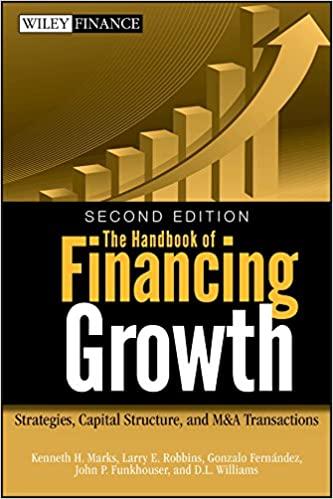Question
C Company, currently has $200 million of outstanding existing debt on its balance sheet. The debt consists of 20-year, $1000 bonds, presently selling at 70.10
C Company, currently has $200 million of outstanding existing debt on its balance sheet. The debt consists of 20-year, $1000 bonds, presently selling at 70.10 % of face value. The coupon bond rate is 8%. Flotation costs on new bonds world raise the effective before tax interest cost to 0.5% above the yield to maturity on existing debt. The company has 10 million shares of common stock outstanding, with a market price of $30 per share. The stocks beta is one and half times that of the market, the risk-free rate is 10% and the average market risk premium is 5%. Flotation costs would raise the effective cost of new equity by 1% over the cost of existing equity. Over the next year, which is the companys capital investment planning period, the company expects to have $20 million of internally generated funds in addition to net income of $30 million. At least half of the net income must be paid out in dividends. The company faces a 35% marginal tax rate.
A. Prepare a marginal cost of capital schedule for the company and use a graph to illustrate it. (You need to determine, the cost of debt (YTM), cost of equity, the markets value of debt and equity and their respective weights).
B. Using NPV, advise the company if it should investment in a project that is going to cost $45 million and starting end of next year, expected to generate $5 million a year for the next 25 years. Show all work and explain fully the basis of your decision.
Step by Step Solution
There are 3 Steps involved in it
Step: 1

Get Instant Access to Expert-Tailored Solutions
See step-by-step solutions with expert insights and AI powered tools for academic success
Step: 2

Step: 3

Ace Your Homework with AI
Get the answers you need in no time with our AI-driven, step-by-step assistance
Get Started


